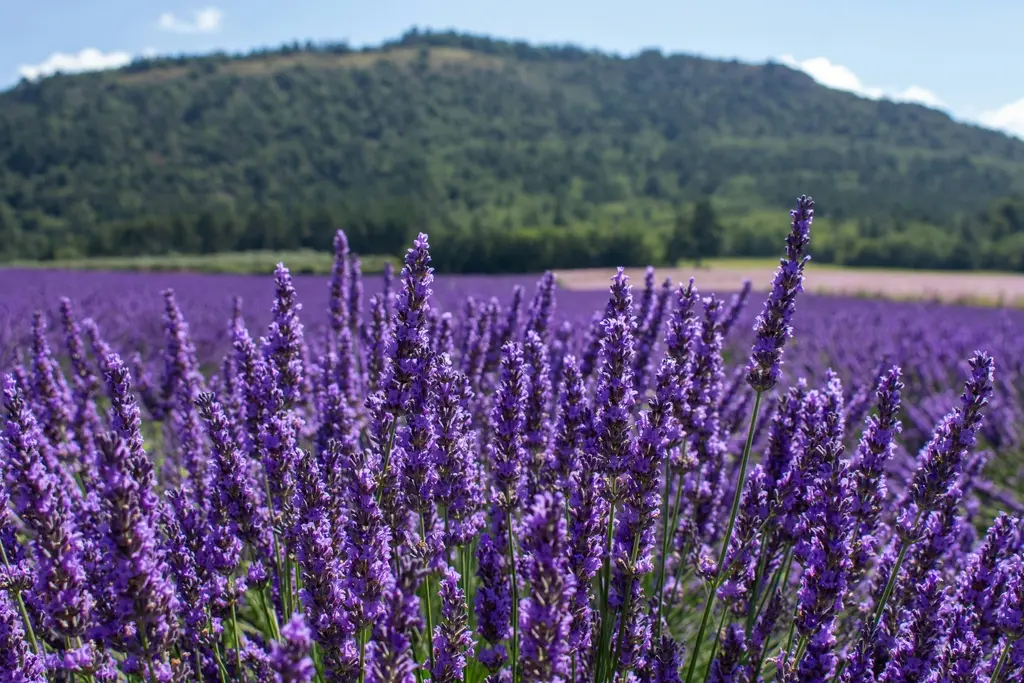Lavender

Identification
English common name: Lavender
Latin binomial: Lavandula Angustifolia
Other common names: True Lavender, English Lavender, Common Lavender, Garden Lavender, Narrow-leaved Lavender, Lavender Vera, Fine Lavender, Blue Lavender, Officinal Lavender
Dutch common names: Lavendel, Echte Lavendel, Gewone Lavender, Tuinlavendel, Engelse Lavendel, Fijne Lavendel, Smalle Lavendel, Lavendel Vera, Officinale Lavendel
French common names: Lavande, Lavande Vraie, Lavande Officinale, Lavende Fine, Lavande Anglaise, Lavande Douce, Lavande à feuilles étroites, Lavande de population, Lavando, Lauando, Lavanjo, Lavané, Arpathie
German common names: Lavendel, Echter Lavendel, Lavendel Officinalis, Feiner Lavendel, Englisher Lavendel, Schmalblättriger Lavendel, Apothekenlavendel, Lobendel, Lobendle, Lavendli, Lawend'l, Hauslavendel
Spanish common names: Lavanda, Espliego, Lavanda Verdadera, Lavanda Común, Lavanda Fina, Lavanda Inglesa, Alhucema, Lavanda Officinalis, Alhucema, Espigolina, Espliego Común
Italian common names: Lavanda, Lavanda Vera, Lavanda Officinale, Lavanda Comune, Lavanda Fine, Lavanda Inglese, Lavandula Angustifolia, Spigo, Spicchio, Nard, Erba Odorosa
Plant family: Lamiaceae (Mint family)
Botanical description: Small evergreen shrub with narrow, gray-green aromatic leaves and spikes of purple to violet-blue flowers. Grows up to 60-90 cm (2-3 feet). Flowers are bilaterally symmetrical with a tubular base and two lips, typical of the mint family.
Related species:
- Lavandula latifolia (Spike lavender)
- Lavandula stoechas (Spanish lavender)
- Lavandula x intermedia (Lavandin - hybrid)
Lookalikes:
- Russian Sage (Perovskia Atriplicifolia): resembles Lavender but belongs to a different genus
- Catmint (Nepeta species)
Cultivars:
- Hidcote: compact, dark purple flowers
- Munstead: early blooming, cold-hardy
- Vera: True Lavender, medicinal
- Grosso: Lavandin hybrid, high oil yield
Medicinal properties
Recommended cultivars: Vera, Munstead, Hidcote
Parts used: Flowers, essential oil
Taste: Bitter, aromatic
Actions:
- Nervine
- Carminative
- Antidepressant
- Sedative
- Antispasmodic
- Antimicrobial
- Anti-inflammatory
Energetics: Cooling, drying, slightly bitter
Medicinal uses:
- Calms nervous system
- Eases tension headaches
- Mild pain relief
- Skin healing and antibacterial
Specific indications:
- Anxiety, stress, nervous tension
- Insomnia
- Digestive upset from nervous origin
- Mild headaches
- Minor burns, insect bites, skin irritations
Medicinal preparations:
- Infusion (tea)
- Tincture
- Essential oil (aromatherapy, topical use)
- Salves and creams
- Hydrosol (floral water)
Ratio and dosage:
- Tea: 1 tsp dried flowers per cup, steep 10 min, 1-3x daily
- Tincture: 1:5 in 40-60% alcohol, 1-4 ml up to 3x/day
- Essential oil: Dilute 2-5% for topical use; not for internal use
Uses in beauty products: Soaps, bath salts, lotions, massage oils, facial toners, deodorants
Precautions and contradictions:
- Non-toxic and edible in small culinary amounts
- Avoid high doses during pregnancy (especially oil)
- Essential oil may cause irritation in sensitive skin; patch test first
- Not for internal use in form of essential oil unless professionally supervised
Magical properties
Facility:
- Calming, Peace
- Healing
- Purification, Energetic purification
- Love, Self-love
- Sleep
- Enhances psychic abilities
- Protection
- Happiness
- Knowledge
- Clarity, Clear thoughts
- Creativity
- Inspiration
- Fantasy, Imagination
- Eternal youth
Magical uses and folklore
- Wards off evil spirits and nightmares
- Burned as an offering for peace and purification
- Used in love sachets and dream pillows
- Carried for protection and calm during travel
- Popular in handfasting rituals and sacred baths
- Very good for cleansing an object or room, can be used instead of Sage
Gender: Feminine
Planet: Mercury
Element: Air (also associated with Water in some traditions)
Crystals that work well with it:
- Amethyst: calming, psychic connection
- Lepidolite: soothing anxiety
- Moonstone: intuition, sleep
- Howlite: calming, sleep
Other herbs that work well with it:
- Chamomile
- Rose
- Lemon balm
- Mugwort (for dreamwork)
Rune Laguz: intuition, healing, dreams
Chakras
- Third Eye
- Heart
- Essential oil: Crown
- Lavandin essential oil: Solar Plexus
Zodiac signs: Virgo, Pisces, Aquarius
Deity correspondences:
- Hekate: protection, dreams
- Aphrodite: love
- Eir: healing)
- Brigid: herbal medicine, sacred wells
Cultivation
Native to: Mediterranean region
Zones: USDA 5-9 (some cultivars hardy to Zone 4 with protection)
Soil:
- Well-drained, sandy or loamy
- pH: 6.5-8 (alkaline preferred)
- Avoid heavy clay or wet roots
Propagation
- Seeds: slow, lower germination
- Cuttings: preferred for true-to-type propagation
- Layering or division
Growing information and garden care:
- Full sun (6-8 hours minimum)
- Prune yearly to prevent woodiness
- Mulch with gravel for drainage
- Avoid overwatering
- Fertilize lightly with compost
Insects and diseases:
- Root rot from poor drainage
- Fungal leaf spot, rare in dry climates
- Occasional aphids or spittlebugs
Harvesting and preparations:
- Harvest just as flowers open for highest oil content
- Dry in bundles upside-down in a dark, dry place
- Store dried flowers in airtight containers
- Distill for oil or infuse in oil for salves